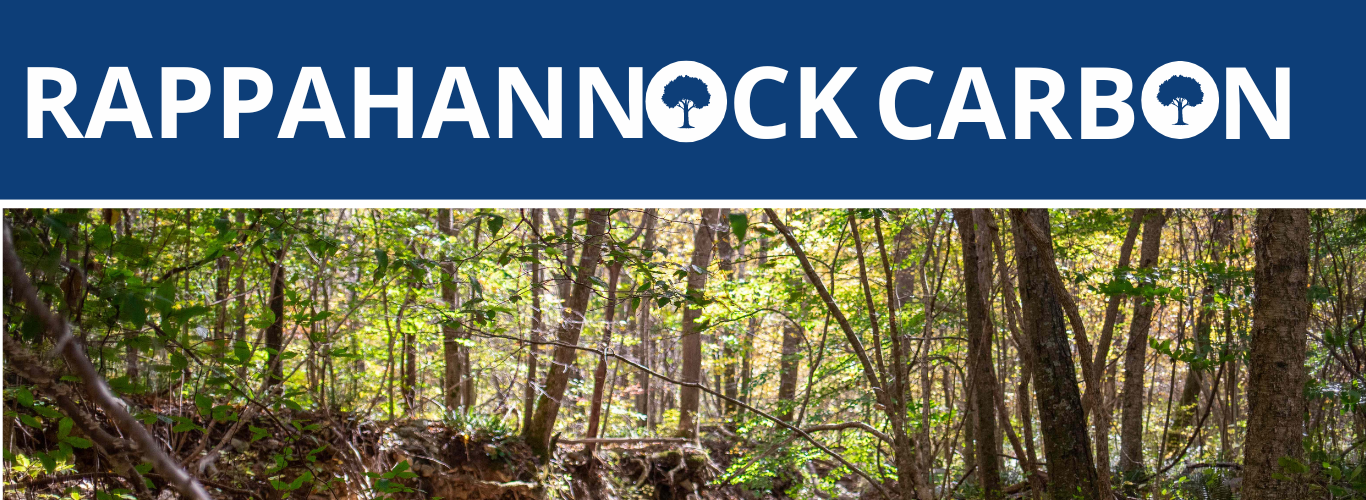
Healthy Watersheds Begin With Healthy Forests, Farms, and Urban Greenspaces!
Rappahannock Carbon, offered by the Rappahannock River Roundtable and First Earth 2030 to assist rural and urban landowners in the Rappahannock River Region in conserving their forests. This program aims to enhance working landscapes and urban tree canopies by utilizing carbon market resources and conservation efforts.
* A representative from Friends of the Rappahannock will review the submissions and follow up with more information.
Want to learn more about this program? Stay tuned we will be announcing the Rappahannock Carbon interest meeting date soon!
What is a carbon credit?
Carbon credits represent avoided emissions of carbon dioxide that would otherwise be released into atmosphere. For most landowners this involves either planting trees or protecting mature trees. Additional carbon sequestration is verified by a third party which quantifies the carbon capture based on tons. One ton of carbon sequestration= one carbon credit. For landowners, income is generated through the sale of credits.
How many acres do I need to qualify?
Landowners in more urban and suburban areas can qualify for certain markets with as few as 15 acres while those living in rural areas generally need a minimum of 50 acres of mature trees to qualify or be willing to convert a similar acreage to timber.
How can landowners get involved?
While there are a wide variety of carbon crediting programs in development, landowners are best advised to engage a project developer who is affiliated with a reputable carbon credit registry. This will give landowners the best chance at higher per-acre yield. The Friends of the Rappahannock and First Earth 2030 are ready and affiliated with top-tier registries that can generate high value credits.
Furthermore, landowners can generate carbon offset credits through conservation practices like delaying timber harvesting or planting trees. Opportunities include forest management, urban tree planting, riparian buffers, pasture management, and more.
Who buys carbon credits?
Carbon credits are purchased by a wide array of off-takers. This can include energy providers, technology companies, the transportation sector, or even firms functioning as middlemen to buy and resell credits. Credit purchases allow buyers to finance an investment in their own sustainability and reduce their reported carbon footprint.
How do I get paid?
The landowner is paid once credits are generated and sold. Credits are initially generated when the landowner first agrees to restrictions and the number of credits are verified. Additional credits can be generated as trees grow and sequester more carbon.
This project is made possible thanks to an Innovative Nutrient and Sediment Reduction grant from the National Fish and Wildlife Foundations (NFWF) Chesapeake Bay Stewardship Fund.